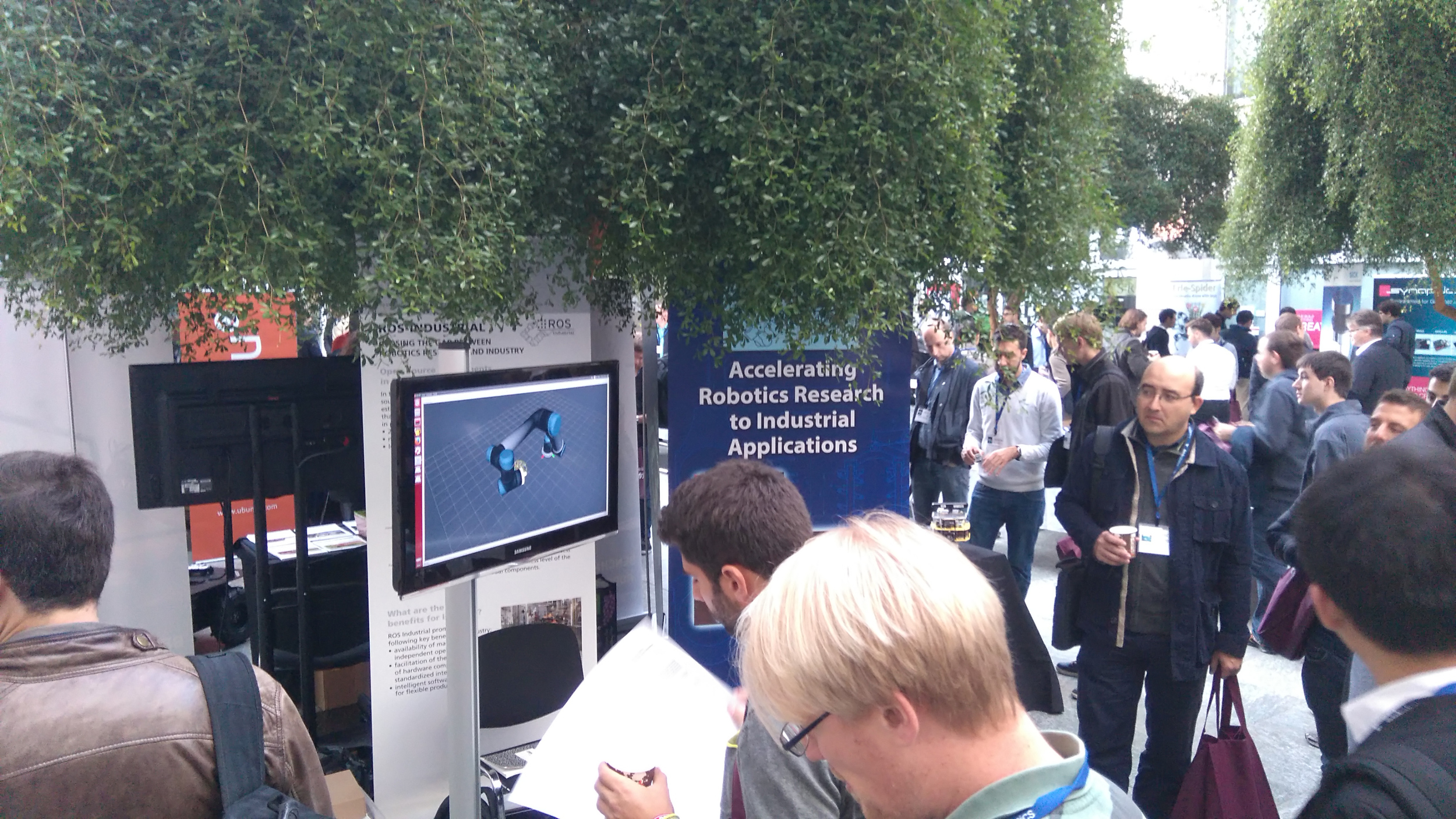RIC-Europe Event Recap: Tech Demo & 2016 Members Meeting
/Thanks to all the participants who made the 2016 RIC-EU tech demo and members meeting a success! On Jan 28-29, Fraunhofer IPA, the managing organization of the ROS-Industrial Consortium Europe, welcomed more than 50 participants to the annual RIC-EU members meeting. ROS technology continues to mature and find its way into commercial products and industrial applications, which was shown during a technology demonstration session.
Martin Hägele welcomes the guests to the tech demo session
Participants had the chance to see for themselves what ROS technology can do in terms of easing robot programming; extending the applicability of commercial software platforms through standard interfaces; allowing for hardware-independent intuitive touch interfaces; and powering next-gen robot hardware.
the tech demos kindly provided by IT+robotics srl, ppm as, fraunhofer IPa and blue workforce a/s
After introductory talks, the attendees enjoyed individual presentations, and were able to interact with the presenters and fellow attendees during an open-floor format. The day ended with a social event.
The members' meeting held Jan 29 is an annual gathering of members for an overview of activities during the previous year and current initiatives. Presentations about efforts similar to ROS-I targeting other domains were given. The SiLA initiative aims at similar standardization efforts, but for lab automation equipment; the Machinekit project, which is undergoing interesting development, can make in the future Machinekit+ROS a full stack covering all of your robotics-related needs, from bare metal up to the user interface. This "sister" project raised considerable interest for its potential, especially for hardware designers in need of a means to interface with ROS. More updates will be available on rosindustrial.org, as integration efforts continue.
the RIC-EU members meeting, held on the second day of the event
Attendees enjoyed presentations from RIC-EU's scientific advisor, Martijn Wisse from TU Delft, and Mirko Bordignon from Fraunhofer IPA on ROS infrastructure further development for industrial use thanks to public funding. Ingo Luetkebohle from Bosch, which recently joined RIC-EU, provided an overview of ROS activities at his organization, while Paul Evans from the Southwest Research Institute briefed the attendees on the North American ROS-I Consortium.
The meeting ended with an open discussion, which provided inputs for the ongoing technology roadmapping activity. This will continue at the upcoming RIC-NA members meeting, and will set the schedule for the technical developments of ROS-I during 2016.
For your reference, the detailed agenda of the whole event can be found here.
































